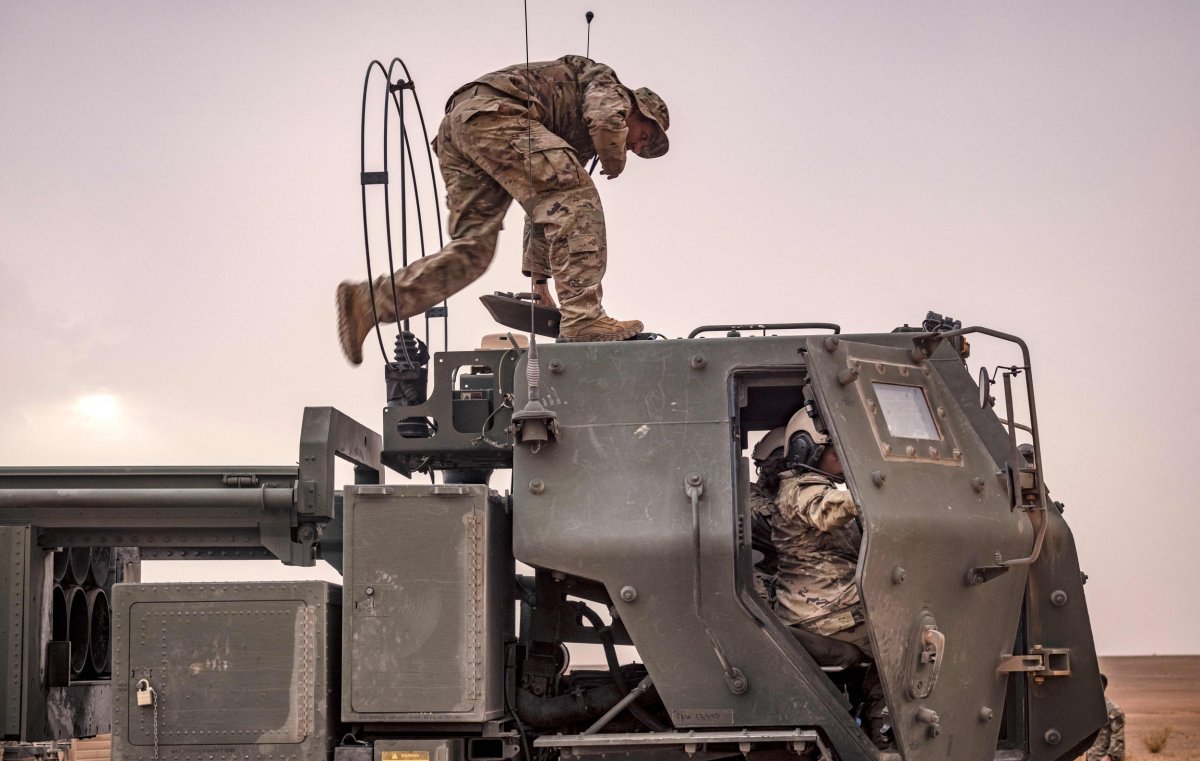Vaunted as a game-changing weapon that has been crucial in Ukraine's fight against Russian aggression, the hype around the U.S-supplied High Mobility Artillery Rocket System (HIMARS) continues to grow.
The Biden administration announced on Monday would provide additional rockets for HIMARS as part of a $1 billion military assistance package that a Pentagon spokesperson told Newsweek would enable "critical success on the battlefield against the Russian invading force."
Developed by Lockheed Martin, HIMARS entered service with the U.S. Army's 18th Airborne Corps located at Fort Bragg, North Carolina in 2005.
By the end of 2009, about 250 HIMARS units had been produced for the Army and Marine Corps with eight battalions going to the Army and two battalions to the Marine Corps, according to Global Security.org.

Plans called for about 900 of the launchers to be built, according to Military Today, which added that some sources reported 540 of the systems have been built.
The systems have been exported to Jordan (12), Singapore (18) and the United Arab Emirates (20) according to the publication which described the delivery to Ukraine as a "small number."
Ukraine has 16 HIMARs, although the country's defense minister Oleksii Reznikov said in July that his country would need "at least 100" HIMARS to reverse Russian gains in the Donbas region.
A lighter version of the M270 MLRS multiple launch rocket system, HIMARS can carry six rockets. Its extended guided rocket Guided Multiple Launch Rocket System (GMLRS) has a range of more than 50 miles.
The system launches its weapons and moves swiftly away before enemy forces locate the launch site and have been credited with helping Ukrainian forces hit Russian command centers and ammunition depots.
There is a scramble to get the weapons that have proven their effectiveness in the Ukraine war.
In July, fellow NATO members Latvia and Lithuania also confirmed plans to procure HIMARS, raising questions over the ability of the U.S. defense industry to cope with international demand.
The previous month, Polish Defense Minister Mariusz Błaszczak announced his country would acquire the systems as part of the modernization of its military.
Factories in Poland would produce significant components of the weapon which Warsaw seeks to integrate with its own battlefield management system, the Defense Post reported.
Their effectiveness has been such that the Polish ambassador to Ukraine, Bartosz Cichocki, told the Polska Times that if HIMARS had been supplied to Kyiv's forces earlier, "the Mariupol tragedy might not have happened."
Unable to avail themselves of the long-range capabilities that HIMARS offered, Ukrainian troops "could not move the front line and were forced to idly watch the tragedy of their comrades," he added, describing the siege by Russia that ended on May 22.
However, military analyst Michael Kofman told the War on the Rocks podcast this week said he did not believe it was "fair to assign any outcomes to battles to HIMARS. You just can't make that connection."
"HIMARS have been provided now and you still see the Russian military trying to push," he said," it's not like the war has ended because HIMARS has arrived on the battlefield."
He added that he was not sure whether earlier in the war, Kyiv's forces had the "institutional framework" in place in which logistics, training and ammunition were available to use HIMARS.
Uncommon Knowledge
Newsweek is committed to challenging conventional wisdom and finding connections in the search for common ground.
Newsweek is committed to challenging conventional wisdom and finding connections in the search for common ground.
About the writer
Brendan Cole is a Newsweek Senior News Reporter based in London, UK. His focus is Russia and Ukraine, in particular ... Read more
To read how Newsweek uses AI as a newsroom tool, Click here.








